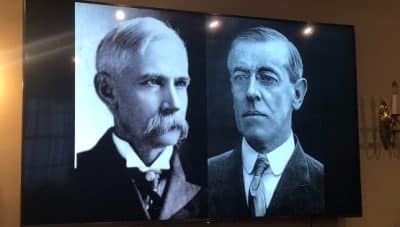
The fundamentals of compressed air are basic and easy to understand. The very definition of this air power is that it is “the use of compressed air, either naturally or artificially, for the generation of electricity and heating or cooling.” The concept is simple. The compressor units work in conjunction with the process and apparatus that we call the central or primary circuit. These are responsible for creating an artificial pressure that will allow the electrical energy generated by the process to be converted into electric energy that can be harnessed and fed back into the power grid.
The elements that go into the creation of the compression of airpower are (but are not limited to) chemicals such as nitrogen, argon, and various other gases. These are used to produce high volumes of static and extremely high pressures at a low temperature. The motors or mechanical components that move the mechanism to create the pressure and the heat are either electric or hydraulically driven. In the case of electrical power, a generator is used.
Electricity has many applications, but the most used airpower devices are wind turbines. Turbines change the energy of the wind into electrical energy. It is quite different from the flow of the air itself, as air is much colder than water, which makes its conversion more difficult.
The increased speed of air compression as it flows through the device and the resulting higher pressure create enough force to move the turbine blades up to approximately 600 miles per hour, which results in very high speeds that are ideal for generating electricity. There are several other applications, such as the production of water, which creates steam, but the high rate of the cycle is used most often. A wind turbine can also be used to generate electricity using reverse osmosis.
Compressor units can be put in place at an array of locations to allow substantial amounts of air to be pushed through a large area. In some areas, the concept of a system like this has been so successful that these are not required anymore since they are now “plug and play” units that can be installed easily at one location.
The compression can be very convenient for both industrial and residential uses and is the most popular form of airpower in the world today. Since the basic principle of the compressor and the machine that creates the pressure are rather easy to comprehend, there is no reason why this technology is not growing in popularity and making a much more significant impact on our lives.
In this section, we will be discussing the various devices that are used in the industry today. When working in the commercial sector, you are regularly exposed to multiple high pressure compressed air systems. As a result of this, we often encounter problems such as eye, nose, and throat irritation, or even a sore throat.
We need to ensure that our industrial compressed air systems are set to a highly compressed setting and maintain at this setting regularly. This is for our safety. We also need to ensure that when we are working in high-pressure environments that we can safely run the machines without experiencing a lapse in concentration. If we are not able to do this, then we are opening ourselves up to being injured.
If we look at the basic operating principles of this device, we can see that it has small reservoirs. There are two main types of reservoirs, which are manually controlled reservoirs and automatic reservoirs. Automatic reservoirs will hold the air while the manual ones will draw on the supplied air while the others deliver it to the machine on demand. What this means is that the air supply can be increased or decreased by using manual controls.
Once the air supply has been switched off, the pressure inside the reservoir will begin to increase due to the evaporator coil. As the pressure increases, it will push air through the evaporator and then condense into a gas that is clean enough to pass through the industrial compressor without any loss.
The question that remains is whether it is still possible to use some other method of controlling the pressure of the machine. It is possible to use a hydraulic type of pump with the help of an external valve. So, you want to be taught about the basics of industrial compressed air? If you have been interested in this type of work for a while, some basic tips can help you improve your performance.
You can find yourself dealing with a variety of nozzles at a single time. You can have one or more of these nozzles at one time, or you can choose to use an air compressor with many nozzles and suction heads. In any case, most people do not make it through their careers without learning the basics of this kind of work.
First, air nozzles are essential to the operation of all kinds of machinery. They are used to supply the right pressure and power to move the cylinder through the process of production. In some ways, they are like hand trolleys. You might have seen these systems on the factory floor.
When you are learning the basics of industrial compressed air, you need to know what air nozzles are, how they are designed, and how they work. Here are tips that can aid you in getting started. Find out more by reading this article.
There are two types of nozzles. They are an open and closed system. Open systems require gas to be blown through the system to create a proper pressure and force to drive the cylinder.
Closed systems are great because they work because of a different principle but using gas instead of air. These systems are popular in the United States and Canada.
In a closed system, you will see the use of an air compressor with many nozzles. Since air is not blown around the cylinder, the system does not work as a nozzle system would. Instead, the air is used to function as a piston in the cylinder and push the air through the process of production.
With this type of system, you do not have to worry about keeping an open-air system in place. However, you will need to look out for the dangers of nitrogen or oxygen poisoning. Once you understand the basics of industrial compressed air, you can do more.
You can use a closed system to run your process of production. But if you need to, you can use an open system to create the air for your production. The most common type of open system used is the horizontal or axis system. This type of system is usually used to run vertical processes of production, which includes machining and welding operations. It will be essential for you to find out more about machines and your place in the machine shop.










